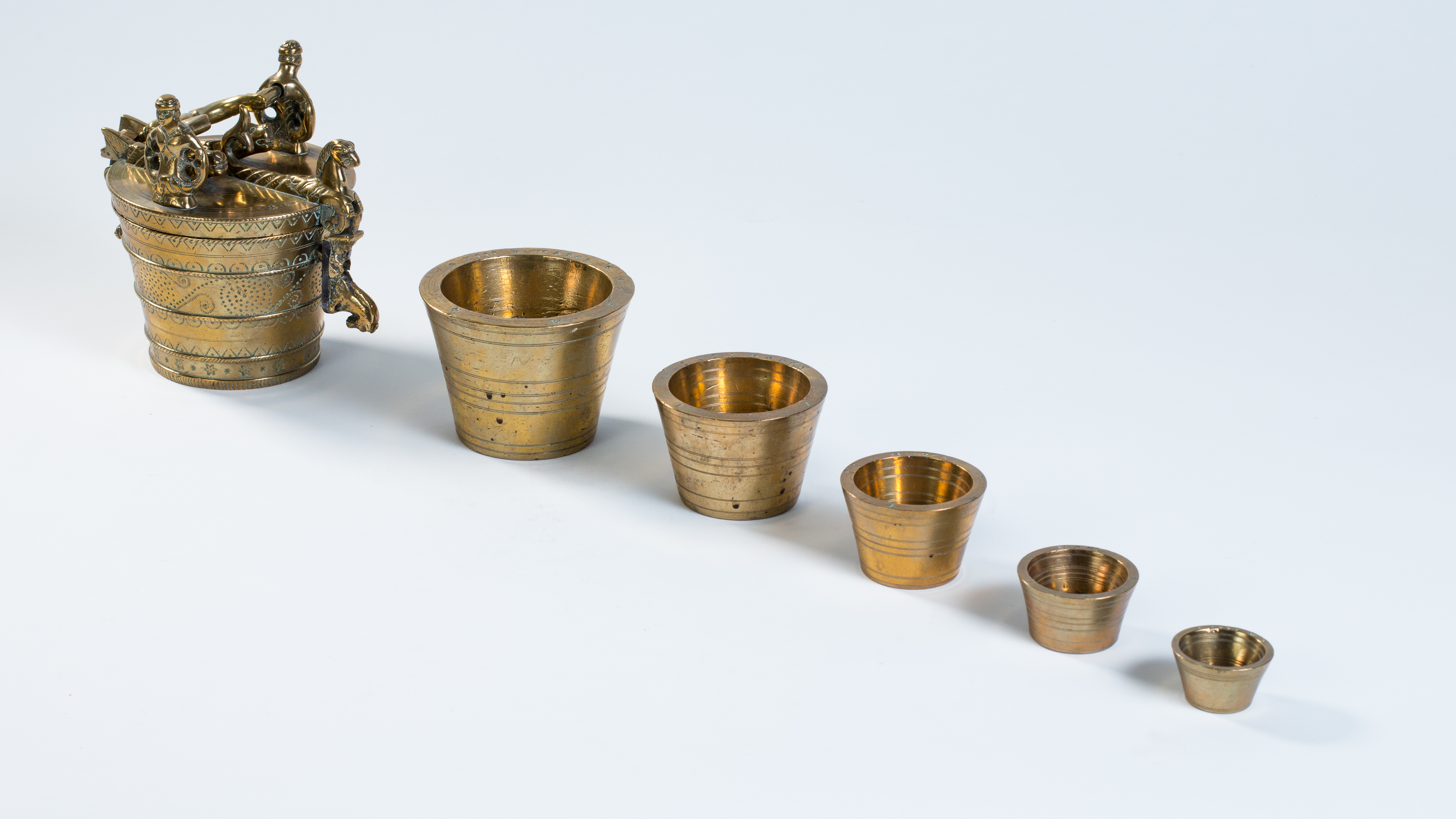Brass Nuremberg Nested Cup Weights

Mid-1500s
This beautiful set of brass Nuremberg nested cup weights was probably made by Dietrich Hagen who worked in Nuremburg, Germany in the mid-1500s.
The six weights are respectively: 16 marcs, 8 marcs, 4 marcs, 2 marcs, 1 marc and 4 once.
The lid of the 16 marcs house vessel, which encloses all the other weights, is particularly ornate and decorated with human figures and hybrid creatures from Greek mythology. The catch on the lid is decorated with a hippocampus; a Greek mythological creature, typically depicted as a horse in its forepart with a coiling, scaly, fish-like hindquarter.
The lid hinge is decorated with a Cerberus; a Greek mythological dog that guarded the gates of the underworld, almost always portrayed with three heads and a serpent’s mane and tail. The supports of the lid handle are human figures.